COLLECTIVE BODY is a multi-user virtual reality dance project that is having its world premiere at Venice Immersive (Competition) this week, before opening at the Lincoln Centre for the Performing Arts in New York this October. We meet creator and choreographer Sarah Silverblatt-Buser, who initiated and directed the project.
Sarah Silverblatt-Buser is also touring with RAVE-L PARTY, a multimedia show combining chamber orchestra and rave party for the Théâtre du Châtelet, commissioned by the Ensemble les Apaches.
Cover: COLLECTIVE BODY
Sociology, dance and technology
Sarah Silverblatt-Buser – Ever since university, where I studied sociology and dance in the United States, I have been interested in technology. There was a course called ‘Technology, Religion and the Future’ that made a big impression on me. I tested the first Oculus headsets in 2013… Then I moved to France, where I danced for Yoann Bourgeois in FUGUE VR, directed by Michel Reilhac. It was 360° content that took me to many different festivals (especially circus festivals), where I discovered many different immersive experiences.
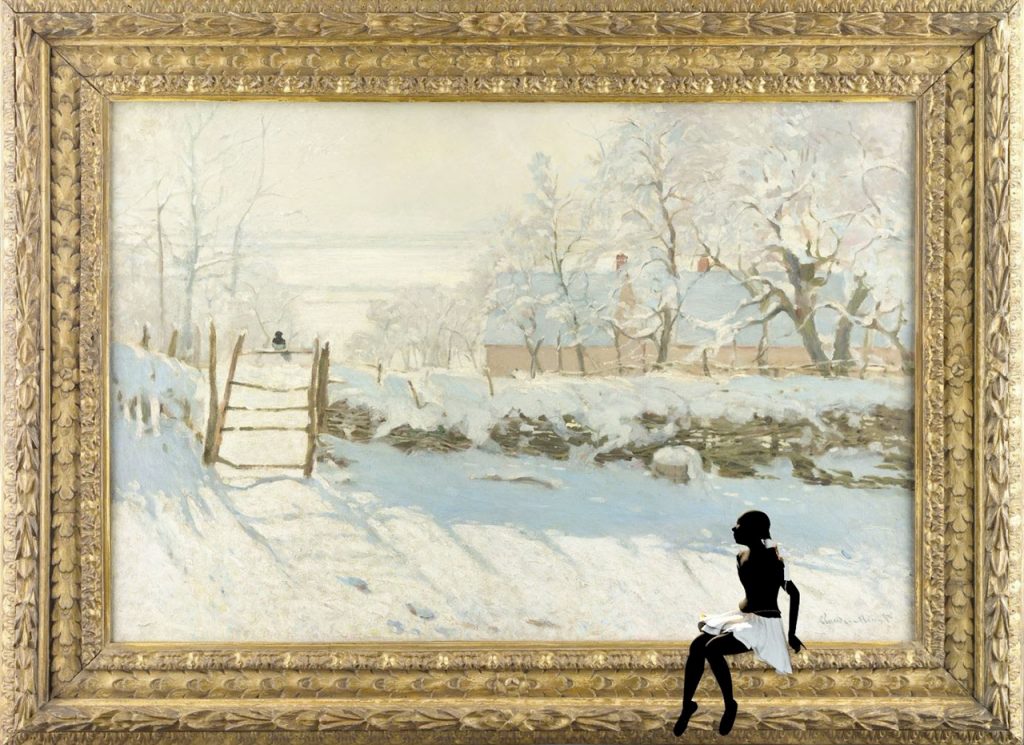
S. S.-B. – Then Covid arrived, restricting travel. That’s when Gordon and the Lucid Realities team contacted me to be WHEN SHE GETS OUT… in a project taking place in the heart of the Musée d’Orsay. I discovered Mocap and the suits I could use to record my movements, and it was fascinating to see my gestures on the screen.
S. S.-B. – We worked with Gordon on short scenes when we shot WHEN SHE GETS OUT…, because I had interactions with objects and paintings that were in 2D. We needed references when recording the motion capture and I had to move around and play with them. These techniques are similar to innovations in virtual production, where actors and dancers can now have a physical set and scenery in virtual scenes. Of course, we still need to use our imagination, but we have better visual references. I was dancing with a broomstick with a hat attached to it!
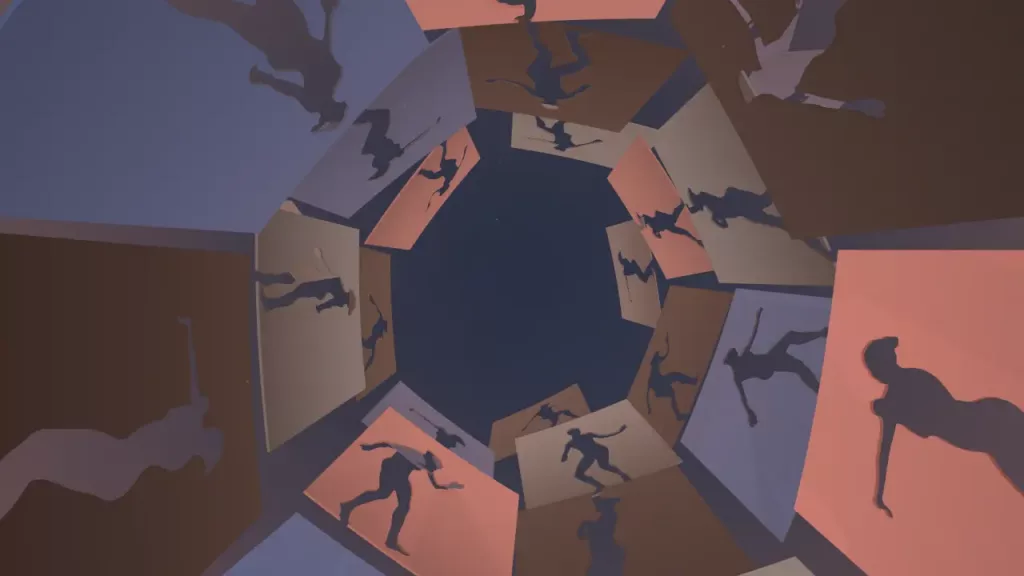
S. S.-B. – On DANSE, DANSE, DANSE – MATISSE (directed by Agnès Molia & Gordon for Lucid Realities and Unframed Collection, also selected for Venice Immersive 2025) more recently, I had another challenge because I play five characters at once! I had to memorise each character’s movements in order to integrate each Mocap together. In particular, we recorded my scenes so that we could project them during filming and check that my movements were properly synchronised. Mocap remains a technology with uncertain precision, especially for arms and legs, so I needed even more references – and precision on my part – to achieve the right result.
The interest of dance for innovation
S. S.-B. – At the intersection of artistic practices, there is the question of presence – or embodiment. It’s talked about a lot in VR, but also on stage. I had talked a lot with Yoann about the sensations we could feel, the air around our moving bodies, physical techniques for being present, etc. So it’s quite obvious to think about bodily expression in immersive experiences. I also wanted to avoid the trap of the whole ‘metaverse’ phenomenon that followed the pandemic, fearing that everything would move online – but COLLECTIVE BODY is indeed a physical experience, collective by nature.

S. S.-B. – When we conducted our tests in spring 2025, particularly with dancers, users felt comfortable and very at ease in the environment. When you are present in the experience and think with your heart, you can access heightened sensations. And it works very well for the general public! Obviously, these are practices that we use in dance, particularly in improvisation.
COLLECTIVE BODY, a proposal for dancing in complete freedom?
S. S.-B. – COLLECTIVE BODY stems from this fear that the future will be entirely virtual, and that we will only live through our avatars. I saw it more as a form of representation of ourselves. I did a lot of research on philosophical and feminist writings that discuss the expression and subjectivity of our bodies. I wanted to reverse the relationship between our physicality and our rationality (which often takes precedence) to imagine an experience that would allow us to better express our identity through our gestures and our physicality. That’s when I came up with COLLECTIVE BODY. Shortly afterwards, I met the Atlas V team through Pierre Zandrowicz.
S. S.-B. – And then I wanted to make people dance, without forcing them to dance! They had to make their own choices, through different proposals – ultimately divided into five stages. During production, we tested this principle against the limits of technology, and we had to integrate this idea of fluidity and naturalness into a straitjacket of VR software and hardware. This was particularly true when it came to developing the avatars during the experience, matching the avatars (16 in total) to the environments, etc. Fortunately, Ferdinand Dervieux, technical director and developer at Albyon, always found solutions.
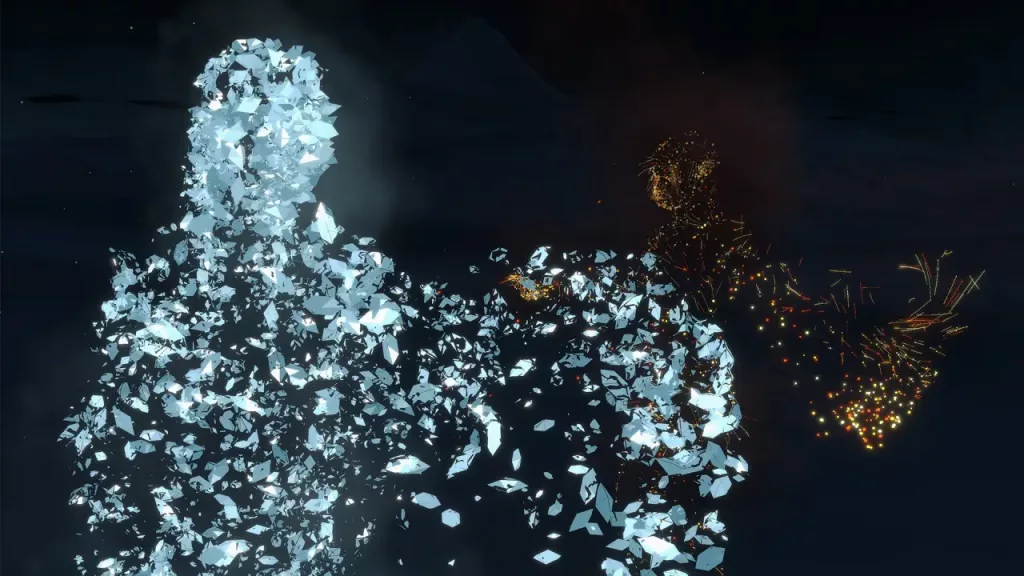
S. S.-B. – The most important thing is obviously how the viewer feels during the experience. There is the virtual aspect, the movements, but also the music, created by Harvey Causon and mixed by Côme Jalibert. I have included a lot of my daily practice, my warm-up exercises, but also a whole range of documentation on well-being and psychology (self-development). All of this helps to demystify dance and encourage people to participate without having to read a manual beforehand. The work is commissioned by the Lincoln Centre for the Performing Arts, with whom we have worked closely to understand the types of audiences we will have there when we begin broadcasting (in autumn 2025). In COLLECTIVE BODY, there is an encounter with oneself, then with other users to enjoy a shared movement.
Born out of an ongoing relationship with Sarah over the years, COLLECTIVE BODY is one of the first immersive projects commissioned by Lincoln Centre, along with THE DREAM MACHINE. It is a project that brings people together around a shared discovery, a unique experience that connects them to one another. This is consistent with our policy and our openness at Lincoln Centre to the New York public.
Jordana Leigh, Vice President, Artistic Programming, Lincoln Center for the Performing Arts
A VR dance experience: some behind-the-scenes insights
S. S.-B. – The multi-user aspect of COLLECTIVE BODY was a real desire from the outset and an important part of the project. When we put on a dance show, we create together and we perform together. I often felt frustrated when testing solo VR experiences, which can give the impression that the medium has reached its limits. When we started working with Ferdinand on this, he managed to network several Meta Quest 3 headsets – which aren’t really designed for that purpose. We also managed to achieve almost complete body tracking, without controllers.
S. S.-B. – During the testing phases, I was able to become an artist-in-residence at the Centre des Arts in Enghien-les-Bains, which opened its doors to us so we could work on site for several days in a dedicated room. It was during this time that we were able to resolve certain technical issues and welcome the team—notably Harvey and Côme—to refine the musical scores for the project. I remain convinced that the future of immersive technology lies in location-based and multi-user applications, but this requires renewed resources for testing and trialling, as well as space – which brings us back to a dance class where working together advances the project in both form and substance. With technology, it’s more complex.
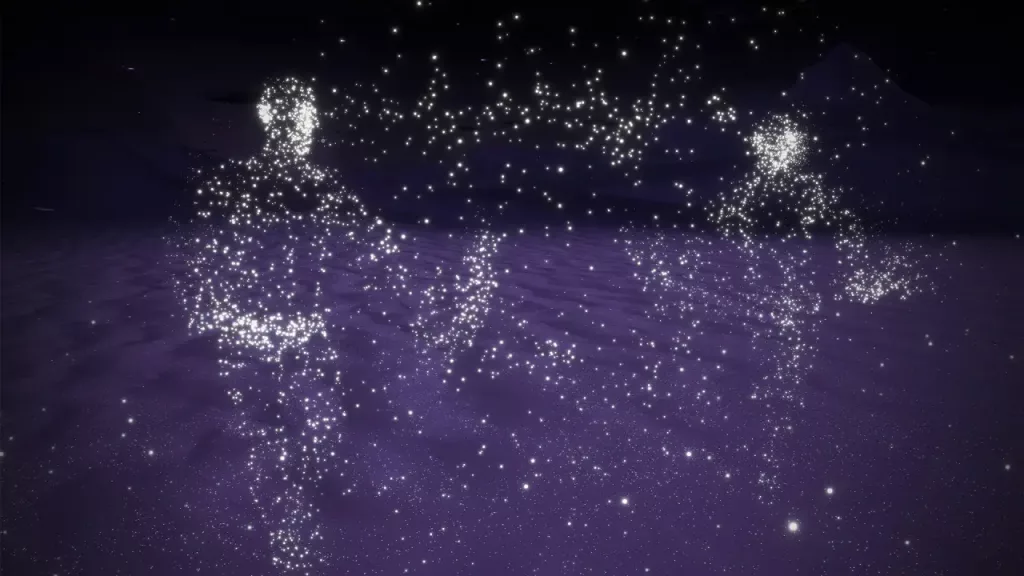
S. S.-B. – In terms of interactions, I imagined a series of movements that I filmed to inspire the prototype we designed at the Lincoln Centre for the Performing Arts two years ago. Then, when the production phase began, we thought about a series of fairly simple movements. In our conversation with Ferdinand, we listed the parts of the body and the objects in the experience that would encourage people to make gestures. I wrote extensively about my intentions and the sensations I wanted to evoke. The music, which is interactive and becomes personalised, also accompanies the different parts to gradually engage the viewer.
S. S.-B. – Visually, I initially wanted to draw inspiration from abstract expressionist artists such as Jackson Pollock and Julie Mehretu. But it was difficult to come up with something that would also appeal to different cultures around the world, where colours can have very important meanings. I didn’t want to alienate certain users by assigning them colours with contradictory meanings. So we chose to go with elements (flame, rain, snow, lava, etc.) with textures more related to nature—and an artistic direction that would allow us to focus on movement and keep the material light enough!

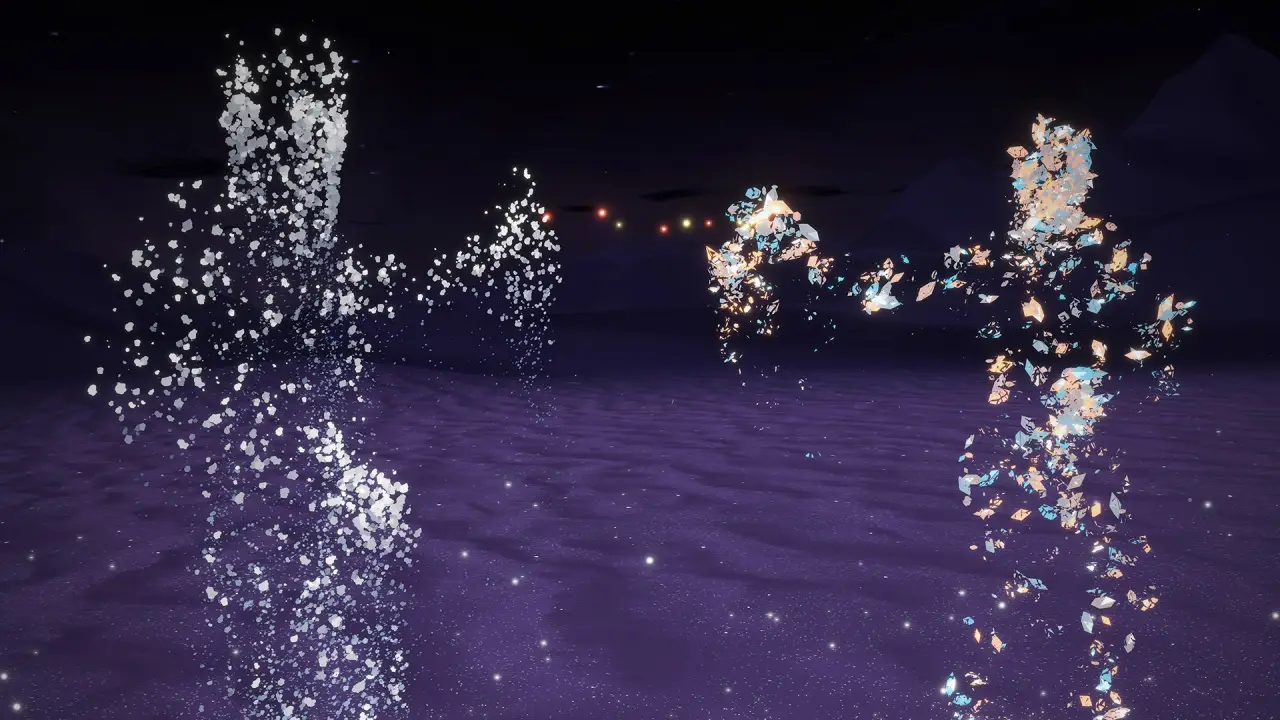

Leave a Reply
You must be logged in to post a comment.